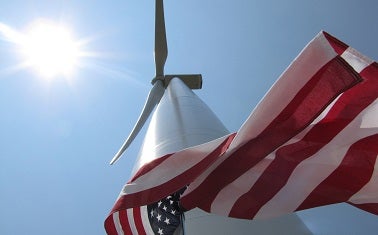America’s Renewables: Increasingly the Low-Cost Option
By: Nancy E. Pfund, Managing Partner of DBL Investors, and Anand Chhabra, former Summer Associate at DBL Investors and current JD/MBA Candidate at Stanford University
 Does more renewable energy mean more expensive electricity? In the nation’s debate on energy, few questions are more important to American families and businesses.
Does more renewable energy mean more expensive electricity? In the nation’s debate on energy, few questions are more important to American families and businesses.
Many critics of renewables allege skyrocketing electricity prices and economic crisis, owing to growing reliance on renewables. This commentary has emphasized “exploding electricity prices,” an “attack on any state’s economy,” and “gouging job creators and American families with higher electricity bills.”
Wait, what?
In our report, Renewables Are Driving Up Electricity Prices – Wait What?, we address this concern directly by assessing average retail electricity prices in the U.S., with a particular focus on whether states rely a lot or a little on renewables. What we discovered is that many of the fears espoused by critics of renewable energy are overblown.
Our findings
In 2013, states that led on renewables (measured by share of overall generation from renewable sources) actually had lower average retail electricity prices than states that lagged on renewables. States that led on renewables also experienced, on average, cheaper electricity than the national average.
These findings are significant because about ten years ago, this was not the case. In 2001, the leading renewable states we studied had slightly more expensive average retail electricity than lagging renewable states. By 2013, however, the states had flipped. Those that led on renewables actually had slightly cheaper electricity on average than states that lagged on renewables.
Similar pricing trends exist in states with Renewable Portfolio Standards (RPS). In these states, mandates require an “increase[d] production of energy from renewable sources such as wind, solar, biomass and other alternatives to fossil and nuclear electric generation.” Many states began to adopt these standards in the early 2000s, and at that time, average retail electricity was more expensive in many states that adopted an RPS compared to states that did not. By 2013, however, electricity prices in these RPS states only exceeded electricity prices in non-RPS states by a hair’s breadth (less than 1 cent/kWh) above the price difference that already existed in 2001.
The road ahead
Looking to the future, an array of factors will affect electricity prices, including fuel costs, power plant construction and operation costs, transmission and distribution, regulation, and rate design. But research into two economic trends deserve particular note.
First, a series of studies have concluded that increased reliance on wind will save people and businesses money. According to an American Wind Energy Association (AWEA) analysis, more than one dozen reports find that increased wind generation would decrease retail electricity costs across the country. These analyses forecast savings of $231 million per year over 20 years in Colorado, $177 million per year in Illinois, $7 billion in the PJM region (the electricity market in the Mid-Atlantic region), and more than $3 billion in the Midwest.
Similarly, more Americans than ever before can save on their electricity bills by relying on solar power. According to Deutsche Bank, by the end of 2016, nearly three out of four states in the nation will have reached grid parity (the “point where the cost of PV-generated electricity equals the cost of electricity purchased from the grid”). The list of states ranges from Maine and Massachusetts, to Michigan and Montana. This means that many Americans can actually save cash by relying on clean and renewable solar power.
These trends offer welcome news for Americans who are concerned about increasing electricity costs. Greater adoption of renewable energy is not going to result in economic crisis, as some critics would have us believe. Instead, the future of renewables looks bright.
Nancy Pfund is a Managing Partner of DBL Investors, a “double-bottom line” venture capital firm based in San Francisco, California. Anand Chhabra was a Summer Associate at DBL Investors and is a JD/MBA Candidate at Stanford University. Their recent report, “Renewables Are Driving Up Electricity Prices – Wait What?” is available online.
Photo source: Flickr











